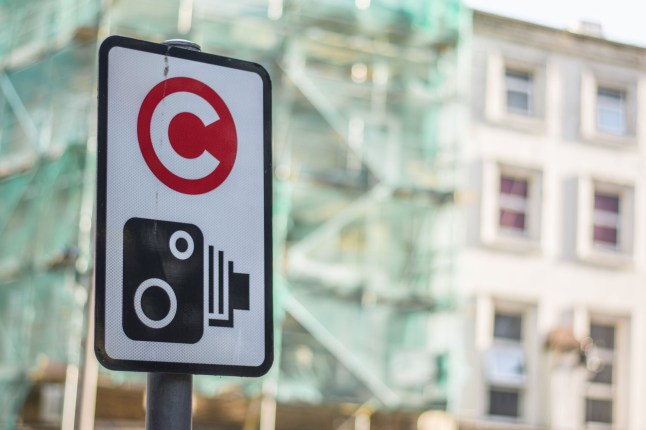
Drivers could soon face a higher congestion charge in central London after plans to increase it were revealed.
Driving in central London is far from enjoyable – and it could soon be more expensive after TfL proposed to hike up the daily charge to £18.
There are also plans to limit the residents’ discount to electric vehicles only.
The move is designed to crackdown on traffic congestion and incentivise electric car uptake to promote sustainable travel.
Here is everything you need to know about the increase and when it will kick in.
How much is the congestion charge rise?

The proposed rise would increase the daily fee from £15 to £18.
This is not the first time the charge has changed. The first rise was in June 2020, when the charge went up from the original £11.50.
Another big change in the pipeline is who could get the residents’ discount.
From March 2027, the residents’ discount would be available to new applicants only if they have an electric vehicle.
Currently, residents get a 90% congestion charge discount, regardless of whether they drive petrol or electric.
When will it change?
Latest London news
If approved, the daily charge could increase within months.
Drivers should brace for the 20% rise from January 2, 2026.
Coupled with the ULEZ charge, some drivers might face more than £30 in daily fees after the proposed increase.
What happens if you don’t pay the charge?
Currently, the charge is £15 if paid in advance or on the same day. If paid by midnight of the third day since travel, it is £17.50.
Under the proposal, the later payment on the third day would increase to £21.
The penalty for not being within 48 hours is £180.

What is changing for electric vehicles?
At the moment, EV drivers do not have to pay any congestion or emission charges in London.
However, this is about to change from January too, when electric car drivers will have to shell out £13.50 each day, and HGVs, vans and motorbikes have to pay £9.
What is the congestion charge?
The congestion charge is different from the Ultra Low Emission Zone (ULEZ) or the Low Emission Zone (LEZ) charges.
The congestion charge aims to cut down traffic, while the emission zone charges drive down air pollution in the capital.
They are separate charges, so some drivers might have to pay them all if their vehicle does not meet emission standards.
What are all the congestion charges in London?
The ULEZ, LEZ and DVS charges operate in the same area as the Congestion Charge.
- Congestion Charge (CC): Operates between 7am-6pm during weekdays and 12pm-6pm on weekends and bank holidays in central London. There is no charge between Christmas Day andNew Year’s Day bank holiday
- ULEZ: The Ultra Low Emission Zone operates 24 hours a day, every day except on Christmas Day
- LEZ: The Low Emission Zone operates 24 hours a day, every day of the year
- Blackwall and Silvertown tunnel charges: The tunnel charge applies to each crossing between 6am and 10pm every day of the year except Christmas Day
- Direct Vision Standard (DVS) for lorries: Applies to lorries over 12 tonnes at all times
Why is the increase happening?
Around 2,200 extra vehicles could clog up London roads if the changes are not made, TfL said.
Congestion cost London an estimated £3.85 billion – or £942 per driver – last year and made London Europe’s most gridlocked city, a study by traffic analyst Inrix said.
Seb Dance, the deputy mayor for transport, said: ‘The congestion charge has been a huge success since its introduction, but we must ensure it is fit for purpose.
‘Sticking to the status quo would see around 2,200 more vehicles using the congestion charging zone on an average weekday next year.
‘At the same time we must support Londoners and businesses to use greener and more sustainable travel. That’s why I’m pleased we’re proposing that substantial incentives remain in place for Londoners who switch to cleaner vehicles.’
People can have their say in the congestion charge consultation until August 4.
What about ULEZ?
The ULEZ charge – currently £12.50 a day – will not change.
Drivers have to pay ULEZ, which applies in the entire Greater London, if their car does not meet the emission standards.
Generally, most modern vehicles – like cars registered after 2006 – tend to meet these standards.
ULEZ has cut roadside nitrogen dioxide (NO2) concentrations by 54% in central London and 24% in outer London since it launched in 2019, TfL said.
When did congestion charge start in London?
The first version of the charge started in central London on February 17, 2003.
Initially, the fee was £5, doubling to £10 by 2011.
Get in touch with our news team by emailing us at webnews@metro.co.uk.
For more stories like this, check our news page.


